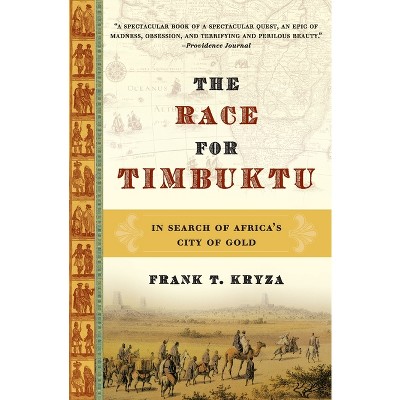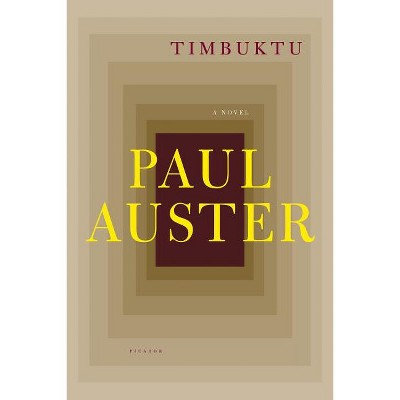Sponsored

Writing Timbuktu - by Shamil Jeppie (Hardcover)
$27.95
Pre-order
Eligible for registries and wish lists
Sponsored
About this item
Highlights
- The long overlooked, centuries-long, culture of the book in West Africa Printed books did not reach West Africa until the early twentieth century.
- About the Author: Shamil Jeppie is associate professor of history at the University of Cape Town, where he founded the Tombouctou Manuscripts Project.
- 240 Pages
- History, Africa
Description
Book Synopsis
The long overlooked, centuries-long, culture of the book in West Africa
Printed books did not reach West Africa until the early twentieth century. And yet, between the fifteenth and twentieth centuries, literate and curious readers throughout the region found books to read--books that were written and copied by hand. In Writing Timbuktu, Shamil Jeppie offers a history of the book as a handwritten, handmade object in West Africa. Centering his account in the historic city of Timbuktu, Jeppie explores the culture of the "manuscript-book"--unbound pages, often held together by carefully crafted leather covers. He describes the most important and most prolific scholars and their works, the subjects they covered, and ways these books were circulated, collected, and preserved. The authors of the manuscript-books wrote to demonstrate their knowledge to their peers, expound theological and legal opinions, and engage in scholarly disputation. After beginning his account in Timbuktu, Jeppie traces the literary connections among places as distant as Marrakesh in the north and Sokoto in the south, and smaller settlements in between. He chronicles the work of Ahmad Baba in late sixteenth-century Timbuktu and his students in early seventeenth-century Marrakesh; the emergence of writers in the eighteenth century in what today is Mauritania; the writings of the scholar-rulers of Sokoto, northern Nigeria, in the nineteenth century; and the eventual discovery of the manuscript-book world of West Africa by European travelers and French colonial officials. Finally, Jeppie finds that the handwritten text persisted even after the advent of the printed book, and even among writers whose books were in print, including the famous Malian novelist Amadou Hampâté Bâ.Review Quotes
"Revelatory. . . . An eye-opening history of the intellectual life of West Africa, written with passion and erudition."-- "Kirkus Reviews"
About the Author
Shamil Jeppie is associate professor of history at the University of Cape Town, where he founded the Tombouctou Manuscripts Project. He is the coeditor of The Meanings of Timbuktu. He is on the Advisory Board of the research center Understanding Written Artefacts at the University of Hamburg.Dimensions (Overall): 9.25 Inches (H) x 6.12 Inches (W)
Suggested Age: 22 Years and Up
Number of Pages: 240
Genre: History
Sub-Genre: Africa
Publisher: Princeton University Press
Theme: West
Format: Hardcover
Author: Shamil Jeppie
Language: English
Street Date: January 20, 2026
TCIN: 1002955970
UPC: 9780691273853
Item Number (DPCI): 247-36-7005
Origin: Made in the USA or Imported
If the item details aren’t accurate or complete, we want to know about it.
Shipping details
Estimated ship dimensions: 1 inches length x 6.12 inches width x 9.25 inches height
Estimated ship weight: 1 pounds
We regret that this item cannot be shipped to PO Boxes.
This item cannot be shipped to the following locations: American Samoa (see also separate entry under AS), Guam (see also separate entry under GU), Northern Mariana Islands, Puerto Rico (see also separate entry under PR), United States Minor Outlying Islands, Virgin Islands, U.S., APO/FPO
Return details
This item can be returned to any Target store or Target.com.
This item must be returned within 90 days of the date it was purchased in store, shipped, delivered by a Shipt shopper, or made ready for pickup.
See the return policy for complete information.











